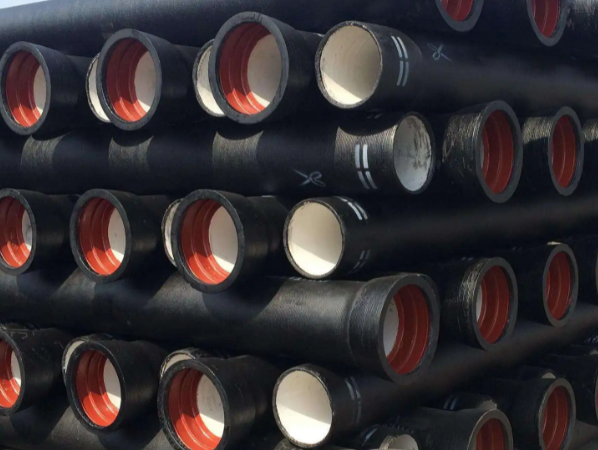
Cast iron pipes are used for water supply, drainage and gas transmission lines, and it includes cast iron straight pipes and fittings. Low labor intensity. According to different casting methods, it is divided into continuous cast iron pipes and centrifugal cast iron pipes, among which centrifugal cast iron pipes are further divided into sand molds and metal molds. According to different materials, it is divided into gray cast iron pipe and ductile iron pipe. According to the interface form, it is divided into flexible interface, flange interface, self-anchor interface, rigid interface, etc. Among them, the flexible cast iron pipe is sealed with a rubber ring; the flange interface of the cast iron pipe is fixed with a flange, and the inner gasket is sealed with a rubber flange gasket; the rigid interface generally has a larger socket for the cast iron pipe, and after the straight pipe is inserted, it is sealed with cement. basically eliminated.

Carbon steel pipes & tube are made of steel ingots or solid round steels through perforation into capillary tubes, which are then hot-rolled, cold-rolled or cold-drawn. Carbon steel pipe plays an important role in my country's steel pipe industry.
Carbon steel mainly refers to the steel whose mechanical properties depend on the carbon content in the steel. Generally, a large amount of alloying elements are not added, and it is sometimes called ordinary carbon steel or carbon steel. Carbon steel, also known as carbon steel, refers to an iron-carbon alloy with a carbon content of less than 2% WC. In addition to carbon, carbon steel generally contains small amounts of silicon, manganese, sulfur, and phosphorus. Generally, the higher the carbon content of carbon steel, the greater the hardness, the higher the strength, but the lower the plasticity.
Types of carbon steel pipes:
Carbon steel pipes can be divided into seamless steel pipes, straight seam steel pipes, spiral pipes, high frequency welded steel pipes, etc.
1) Hot rolled (extruded) seamless steel pipe : round tube billet → heating → piercing → three-roll cross rolling, continuous rolling or extrusion → stripping → sizing (or reducing) → cooling → straightening → hydraulic test (or Flaw detection) → marking → storage
2) Cold drawn (rolled) seamless steel pipe: round tube blank→heating→piercing→heading→annealing→pickling→oiling (copper plating)→multi-pass cold drawing (cold rolling)→blank tube→heat treatment→straightening →hydrostatic test (flaw detection)→marking→storage
